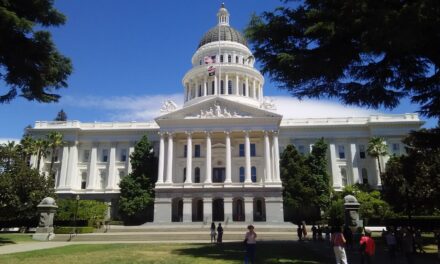Does homebuyer psychology drive housing bubbles and busts? Let us know your thoughts in the comments section below.
- Yes (81%, 114 Votes)
- No (19%, 27 Votes)
Total Voters: 141
Do buyer expectations ultimately shape real estate prices? This article examines both sides of the real estate bubble and proposes that ending vicious real estate cycles will remove the power of herd mentality.
First a fever, then a cold
Robert Shiller recently published a landmark study in the behavioral economics of the real estate crisis. He and Karl Case conducted a ten-year survey of homebuyer price expectations. The survey attempts to answer the question: what have homebuyers been thinking?
Related article:
The Brookings Institution: What have they been thinking? Homebuyer behavior in hot and cold markets
The study attempts to understand real estate bubbles by asking:
- are buyers aware of current pricing trends in their region?;
- what have been their expectations of price movement over 12 months? ten years?; and
- have their expectations been rational?
Since Shiller is swimming in the murky waters of buyer psychology, there are no definitive answers. However, the results of the study point to two conclusions:
- homebuyers are generally rational; but
- overconfidence in the long-run performance of real estate proved disastrous.
Shiller paints a picture of the real estate market’s movement as a self-fulfilling prophecy. In this view, the housing market performs as it does due to the expectations of actors (buyers and sellers) in the market. Thus, bubbles are a result of irrational exuberance.
During the boom, irrational exuberance over fantastical home price appreciation fueled the bubble. Now the trauma of the bubble’s implosion is holding the real estate recovery back.
Are buyers blind?
Today, this question appears silly. How can individuals not be aware of economics, when it IS the news? But before the catastrophic financial events of 2008, it wasn’t clear if people were paying attention. Was public inattention really a driving cause behind the bubble?
According to Shiller’s survey, homebuyers had their eyes wide open.
Each year the survey was conducted, a vast majority of the respondents (approximately 80%) correctly identified current trends in housing prices. In 2004, a time of astonishing momentum pricing in California, 87% of survey participants in Orange County commented that prices were rising rapidly. A full 100% of survey participants in Orange County and San Francisco reported that prices were rising in 2004.
Are expectations rational?
Of course, this is a bit of a loaded question and is deeply dependent on one’s definition of “rational.” Rational, here, refers to the extent to which homebuyer expectations of price changes corresponded to real changes in the market. Irrational expectations would be characterized either by an optimism or pessimism regarding price changes that were not reflected in actual price movement.
Shiller used another survey to determine the reasonableness of homebuyer expectations. The survey asked how much homeowners expected their homes’ values to change:
- within the next 12 months; and
- each year for the next ten years.
Expectations of price changes over 12 months were relatively restrained. The majority of homeowners expected only modest gains or losses. For example, the Orange County respondents expected an average price decline of 3% in 2008. History has shown this expectation to be quite conservative.
Home price expectations over the next ten years revealed a much deeper confidence in gains. The very same respondents in Orange County who predicted the 3% price decline in 2008 expected over 10% annual price increases over the next 10 years.
Expectations of price increases in the ballpark of 10% were the norm across all regions surveyed. Home price appreciation of 10% per year seems absurd. But these expectations were not necessarily irrational.
The Case-Shiller ten-city composite index reveals an 11% gain in home prices from 1996 to 2006. The impression of perpetually appreciating home prices made by this long rally was obviously profound. Homebuyers were thinking like economists: the future will be like the present.
Driving the bubble
It seems that long-term expectations of unrelenting housing price increases are what drove the bubble. Homebuyers were primarily spurred by confidence in the durability of housing as a long-term investment. The ten-year history of rising house prices during the boom created the illusion of perpetually increasing prices. A longer view, going back to WWII, reveals the incredible blip that the housing bubble was. Unfortunately, not many had such a long history in mind.
After the housing bubble imploded in 2008, long-term expectations of home price growth fell as well. This has led Shiller to the thesis that housing fever works both ways.
Related article:
The New York Times: Housing fever can work both ways
Prophecies fulfilled
So do home prices increase because humans believe they will, and thus the opposite is true too?
Perhaps this is the case. So long as our economy works on a boom/bust cycle, pricing trends will remain subject to the power of herd mentality. Violent cycles will continue to be expected and accepted as anatural attribute of the “rational market.”
But are we merely helpless rag dolls, tossed about by the whims of increasingly violent booms and busts? Shiller’s more refined view of behavioral economics says no. A rational equilibrium, is possible. Under this paradigm, the cycle is controlled to rise on fundamentals rather than herd mentality. In other words, we fix the market instead of waiting for it to fix itself.
The rational equilibrium requires the political will for stricter regulation of financial markets. First, we must reinstate Glass-Steagall. Then, we must rein in over-reaching governmental housing subsidies pushing homeownership. This would first take shape by repealing the mortgage interest tax deduction (MID) and the capital gains exclusion for homes.
Related articles:
The mortgage interest tax deduction: working class regression
Real prices, really
As we have written extensively over the past several years, pricing in the real estate market works on two levels:
- the historical mean price; and
- artificial asset price inflation.
Housing’s historical mean price follows the rate of consumer inflation. This is for the simple reason that real estate assets are fundamentally composed of materials, labor and land. Improvements on real estate are essentially consumable goods which have a rental value. Although land is not consumable, its mean price intrinsically tied to wages, and thus the measure of consumer inflation..
All home price fluctuations above and below equilibrium (core inflation) are primarily the products of the self-fulfilling prophecy effect. Interest rates, population densities and the myriad mysteries of human psychology all play a part in sending real estate asset prices on a random walk above and below the mean price anchor.
Related article:
Ironically, it may be irrational to think market forces will coalesce into a rationally functioning machine. Congress and the Federal Reserve won’t develop all-encompassing policies to eliminate cyclicity from the real estate market any time soon. There’s just far too much money to be made from speculating during times of bubbles and busts. (And too bad that it results in losses for homeowners.)
If homebuyer psychology is what drives vicious market cycles, there may be hope yet. The magnitude of the real estate bubble, financial crisis, Great Recession and Lesser Depression has made an indelible impression on the psyche of homebuyers. Zero-bound interest rates have become a revelation for most.
Granted, we may now be suffering from a reverse bubble. But once equilibrium is reached, the looming figure of another Depression may be sufficient for arresting momentum movers in their tracks.
We will have to wait and see.















I agree with the other comments, consumer psychology is only one factor. Equally important is easy money, government forcing lenders to give loans to unqualified buyers, in the name of “equality”. More regulations are not the answer, I would always vote for less government regulation rather than more!
it is not homeowner psychology that drives the housing market but it is a combination of lending practices and the overall economy ( i.e: whether money is tight or not and the employment and income of the consumer.
The consumer psychology is a factor but a minor factor.
A Herd mentality will always prevail when it comes to owning Real Estate. It is and always will be the number one investment choice for creating wealth. The logic behind Mr. Shiller’s work for the most part is simplistic in nature to understand, but has absolutely no meaning to those who follow the Herd.
Interesting article, but completely ignores the HUGE effect of the GSEs (coupled with the Fed’s money printing) in encouraging (even demanding) that lenders lend to unqualified borrowers with no skin in the game.
YOUR PUBLICATINS ARE VERY HELPFUL. KEEP UP YOUR GOOD WORK!